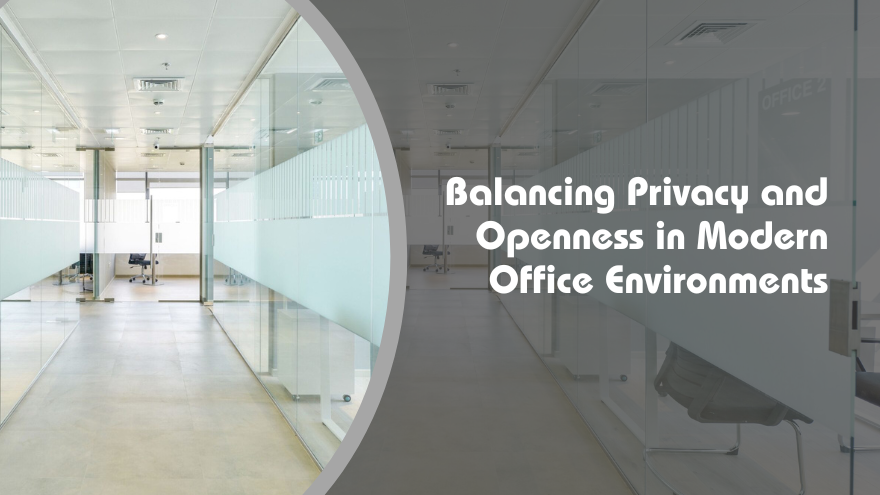
In today's fast-paced corporate world, achieving the perfect balance between privacy and openness in office design is paramount. Modern workplaces strive to foster collaboration, communication, and employee well-being while catering to the need for private, focused work and confidential discussions. This blog explores the significance of striking the right balance between privacy and openness in modern office design, with a special focus on various office space options like private office spaces, rental office spaces, coworking spaces, and virtual office spaces, to accommodate diverse work needs.
Open office layouts have gained popularity due to their potential to encourage collaboration, teamwork, and a sense of community among employees. By removing physical barriers, open spaces facilitate face-to-face interactions, leading to a more dynamic work atmosphere and the seamless exchange of ideas. Moreover, open spaces can improve employee morale, foster creativity, and create a more inclusive work environment.
However, open office designs also have drawbacks. The lack of privacy can lead to distractions and reduced concentration, affecting individual productivity. The constant exposure to noise and visual stimuli can create stress and hinder the ability to focus on complex tasks. Furthermore, sensitive discussions may be overheard, and confidential information could be inadvertently shared, compromising data security.
While openness promotes collaboration, privacy is equally vital for individual performance and well-being. Private office spaces offer employees a secluded area to concentrate on tasks, mitigating the distractions that arise in open layouts. They are ideal for confidential discussions, allowing employees to engage in sensitive conversations without concerns about privacy breaches. Additionally, private office spaces provide the autonomy and personal space necessary for enhancing productivity and well-being.
Private Office Spaces: For organizations seeking maximum privacy, private office spaces are the perfect solution. These dedicated areas provide employees with personalized working environments, free from distractions, and are particularly suitable for managers, executives, and employees handling sensitive tasks.
Coworking Spaces: For those who value collaboration and networking, coworking spaces offer shared working areas where professionals from various industries can work together. These spaces strike a balance between privacy and openness, enabling interaction while providing private workstations for focused tasks.
Rental Office Spaces: Rental office spaces provide businesses with the flexibility to lease office areas for specific durations, making them ideal for startups and organizations in transition. These spaces can be customized to meet the needs of each tenant, combining the benefits of privacy and openness.
Virtual Office Spaces: Virtual office spaces offer a cost-effective solution for businesses that require a professional address and communication services without the need for physical office space. Employees can work remotely while maintaining a professional presence.
To strike the perfect balance between privacy and openness, organizations can consider implementing the following strategies and amenities:
Conference and Meeting Rooms: Equipping the workplace with conference and meeting rooms allows for both private discussions and collaborative gatherings. These spaces can be reserved for team meetings, client presentations, and confidential discussions.
Furnished Working Space: Providing furnished working spaces with ergonomic furniture ensures that employees have a comfortable and productive environment for focused tasks.
Amenities: Offering amenities like refreshment areas, recreational spaces, and wellness facilities promotes employee well-being and creates a balanced work environment.
Networking Opportunities: Organizing networking events and activities within the workplace encourages collaboration, communication, and the exchange of ideas among employees and industry peers.
Conclusion
In conclusion, finding the right balance between privacy and openness is essential for creating a harmonious and productive modern office environment. By exploring various office space options like private office spaces, rental office spaces, coworking spaces, and virtual office spaces, organizations can cater to the diverse needs of their employees and work styles. Implementing strategies like conference and meeting rooms, furnished working spaces, and networking opportunities further enhances the workplace experience, fostering collaboration and productivity. With a well-thought-out office design that strikes the right balance, organizations can achieve an environment that embraces both openness and privacy, contributing to the success and innovation of the business.